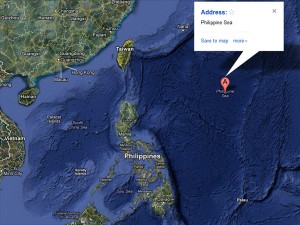Chinese fishermen on front line of marine dispute
 TANMEN, China—The tropical waters of the West Philippine Sea are among the most contested on Earth, but Chinese fishermen who sail in them shrug off the dangers of navigating between multiple competing claimants.
TANMEN, China—The tropical waters of the West Philippine Sea are among the most contested on Earth, but Chinese fishermen who sail in them shrug off the dangers of navigating between multiple competing claimants.
“It’s a little risky… but in Chinese regions we’re not afraid, we’re in sea which belongs to us, how could we be arrested?” asked Liang Min, 29, as he stood in his ship’s dank engine room, wearing yellow plastic shoes.
It is a sentiment that would be disputed in several Asian capitals, and as tensions mount in the area Liang risks finding himself embroiled in an international incident on one of his regular visits.
Beijing says its “historical waters” include a vast swathe of the West Philippine Sea, also known as South China Sea, detailed on a map published in the 1940s.
The “nine-dash line” that marks its declared rule sweeps almost to the coast of Borneo, over 1,000 kilometers from the Chinese mainland, and provoked fury when it was included in new Chinese passports issued last year.
In his address opening China’s parliament this week, Premier Wen Jiabao said Beijing should “develop the marine economy… and safeguard China’s maritime rights and interests”.
As China presses its claim it has increased its naval and marine surveillance presence, as have its southeast Asian neighbors, which cite international conventions to strongly deny Beijing’s authority — raising fears of open conflict.
“The sea belongs to us, our ancestors fished there,” said an elderly boat owner surnamed Wang in Tanmen, a run-down but bustling port on China’s island province of Hainan, where ships offload catches of octopus, sailfish and mackerel.
His words echoed reports in Chinese state media saying Chinese fishermen have been active in the area since the Han Dynasty, which began in 206 BC.
A third of the world’s seaborne trade passes through the West Philippine Sea, and it could hold enormous reserves of oil and natural gas.
But for the fishermen of Tanmen, its strategic significance pales in comparison to the attraction of its rich marine stocks.
So many fish shoal around the Paracel islands — which are claimed by China, Vietnam and Taiwan — that Liang said he and his crew dive down to coral reefs at night to grab creatures as they sleep.
For others the Spratlys, a motley collection of reefs and islets disputed by the three Paracel claimants plus the Philippines, Malaysia and Brunei, are the biggest draw.
“There aren’t many people catching fish there, so fishing is much easier,” said a middle aged-woman surnamed Guo, who travels to the archipelago with her husband on a new 60 foot (18 metre) boat, bought with a loan from the local government.
But trips to the islands are risky, with Beijing claiming more than 11,000 Chinese sailors have experienced attacks, robberies or detention by foreign powers since 1989.
“If there are a lot of Vietnamese ships, it can be scary, but now we have more and bigger boats so we’re not afraid,” said Guo, casually tapping her foot on her vessel’s steering wheel.
Last summer a naval patrol vessel accompanied 30 Chinese fishing boats to the Spratlys, prompting concerns that Beijing was using the industry to re-assert its territorial claims.
Chinese maritime authorities have also stepped up their own patrols and detained fishermen from rival countries, including 21 Vietnamese sailors in one incident.
M. Taylor Fravel, a professor at Massachusetts Institute of Technology (MIT) in the United States, told AFP that economic factors were involved. “All states in the region have over-fished waters close to home, which means that they are more active in other areas,” he said.
At the same time China is boosting its military presence in the sea, establishing a new city — Sansha — and army garrison on one of the Paracels last year.
Beijing unilaterally awarded Sansha two million square kilometers of sea, creating an oddity that is by far the world’s largest city by area but has a minuscule population of around 1,000 people — little more than the planet’s smallest city, the Vatican.
Officials and provincial media say they will promote tourism in the region, a move set to alarm neighboring countries.
One Hainan travel company offered a four-day cruise taking in the newly created city for 7,800 yuan ($1,300) — for Chinese citizens only — but could not confirm a departure date.
Beijing is in the process of expanding its maritime reach, with its first aircraft carrier entering service last year, part of a military expansion which has prompted China’s neighbors to upgrade their navies and seek closer ties with the United States.
But Wu Shicun, the head of China’s state-run National Institute for South China Sea Studies in Hainan denied Beijing had become more assertive, saying that its military development in the region was “too slow.”
“I hope our aircraft carrier can soon be sent to the Nansha Islands,” he said, using the Chinese term for the Spratlys.
“I think that China is under pressure in the South China Sea, especially with the entrance of the US, so we need to play a more active role,” Wu said.
It is a prospect Liang welcomes. “We have a lot of police boats there now,” he said. “I’m not afraid of going anywhere.”














